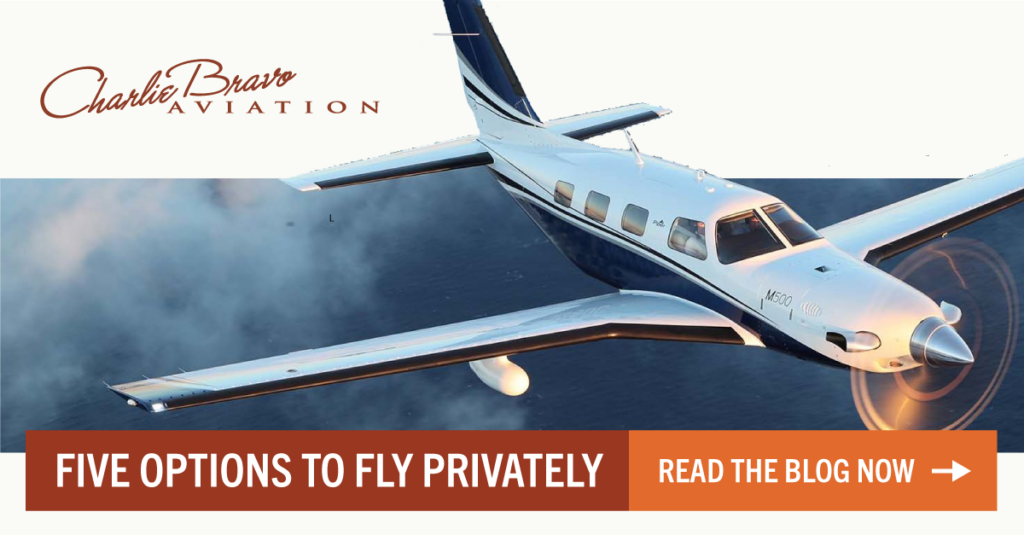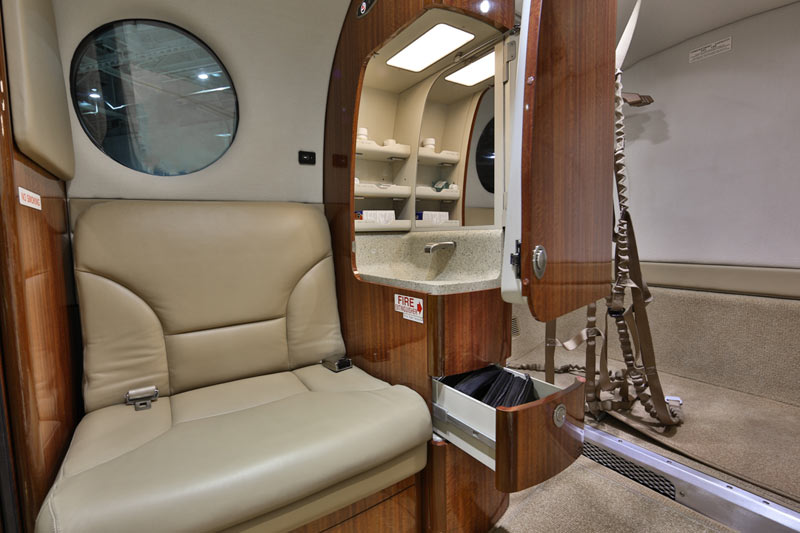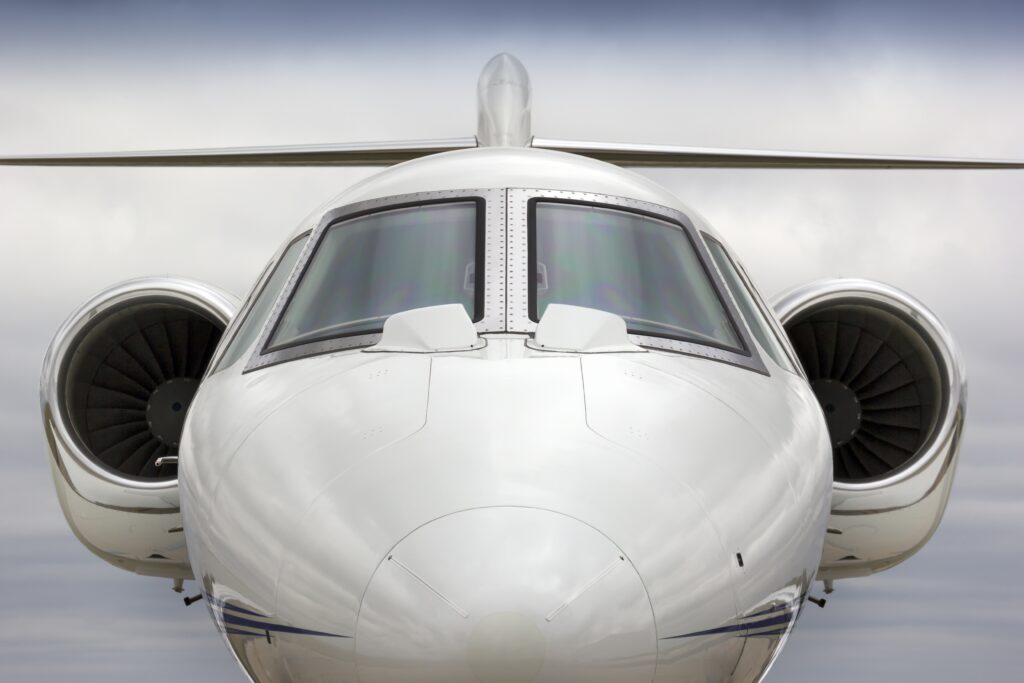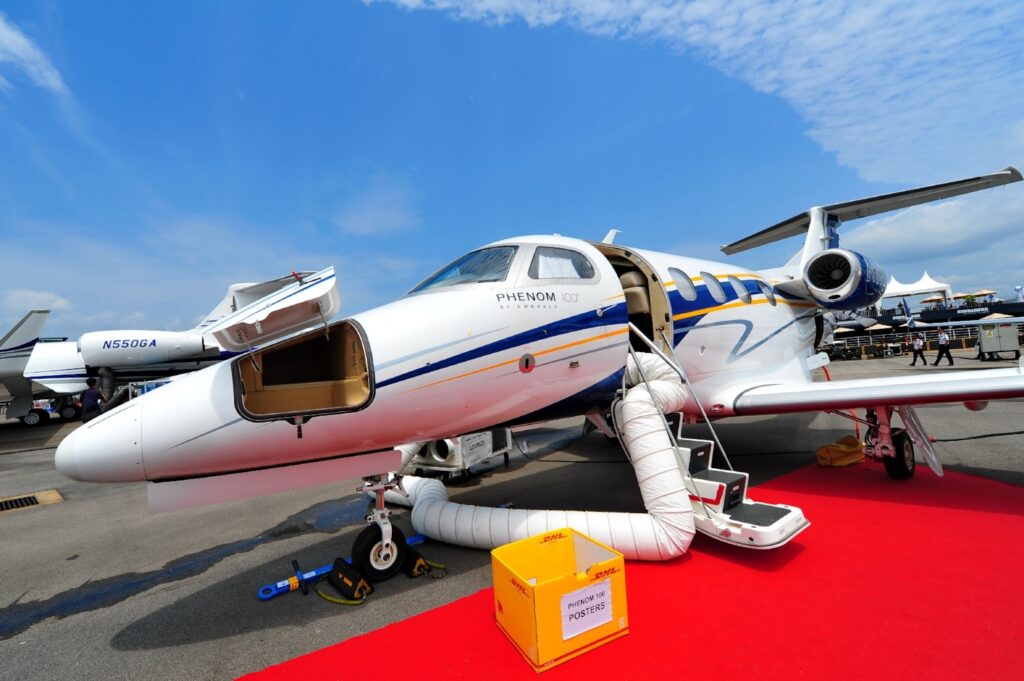In our blog last week, “Four Benefits of Private Aviation,” we addressed private aviation as an alternative to the inconveniences and frustrations of commercial air travel, especially as presented in 2021. With more than 55% of individuals reporting they are more likely to fly privately than before COVID-19, we wanted to take some time to share different options to doing so.
Interested in learning more about how other individuals are shifting their travel preferences in response to the global pandemic? Participate in our study, and we’ll send you a report about the trends towards private aviation as a way to protect your greatest assets—your people
1. Charter
Charter is the first option to try when considering private aviation. This is similar to ordering a taxi or an Uber; it’s a one-time trip and is paid for as such. With charter, it’s likely that you will be on a different plane each time with different crew. Depending on your preferences and mission, this could be a pro or con. Here are other things to consider:
On the pro side, there’s no significant commitment or investment to traveling privately in this way. You can explore multiple types of aircraft to determine what you like and don’t like. For example, do you feel more comfortable in a large cabin aircraft that costs more to operate or a smaller plane for a short flight?
When looking at the cons, there are additional fees that can raise the price quickly. You may be charged for “extras,” such as having a bottle of champagne or catering. If the plane needs to be relocated to pick you up, you may be changed for the empty leg relocation flight. Finally, it’s likely that there is a limit on flight hours. If it’s a two hour limit per day, and you will be gone for three days, then you will need to pay for at least six hours.
2. Dry Lease
Another option for flying privately is a dry lease, renting a plane from someone. This is fairly common, but there are some warnings to keep in mind. When dry leasing a plane, you must pay for all expenses on the aircraft incurred for your use, including hiring pilots and paying for landing fees and fuel.
If you do not pay for all costs, and they are not operating as a charter operator, then you may have pushed the bounds of legality. This can lead to penalties with the IRS. To avoid such penalties, we recommend you sign a dry lease agreement created by an aviation attorney to avoid any legal issues.
There are strict regulations around dry leasing because some people use it to avoid federal excise tax. We encourage you to learn about the maintenance standards being upheld on the plane as well. The FAA regulates charter operators but not private aircraft that are not being chartered out.
3. Membership
A third option to consider is membership. With membership, you pay a one-time initiation fee and then pay per hour of flight time. There are no relocation fees or hidden charges. Because of that model, you may pay a little more per hour than some of the other options, but it is simple and easy.
Additionally, you can order a flight hassle-free with a few clicks on the membership app and submit any preferences regarding plane type. With this option, you can use similar planes and have consistency with trained crews.
4. Fractional Ownership
Fractional ownership is another option to consider. You may be familiar with NetJets, a company that sells part ownership or shares of private business jets. This is one way to engage in fractional ownership, but you could also partner with someone, possibly a neighbor or business associate, to have partial ownership of an aircraft.
With a company like NetJets, there may be a higher cost of operation. When partnering with another entity, you may encounter complications such as sharing flights or schedules, but you have the ownership benefits such as tax depreciation that you can use to your advantage. With ownership, you can bring in a management company to handle the details of hiring pilots, caring for the aircraft, and ensuring maintenance is completed.
5. Jet Ownership
Last, and far from least, is jet ownership. Owning a jet, a major bucket list item for many, gives you freedom unlike any other. Not only do you have unlimited access to the clear sky but also to an aircraft anytime you want. Even when you bring in a management company, you still get to call all of the shots on your terms.
Of the many benefits to jet ownership, the tax benefits in the U.S. are currently unprecedented. Through 2023 there is 100% bonus depreciation on new and used aircraft, which means that you can write off the entire aircraft in one year as opposed to using the typical five or seven-year MACRS depreciation schedule. In our blog about the CARES Act, we explain the provision for net operating loss carryback, which can also be a benefit.
To give you additional insight into private aviation trends, our analyst team is compiling research to monitor the market. We’d love your input. In exchange, we’ll share the results with you. If you want current market information on a specific type of aircraft, subscribe to our market reports. These come out on a quarterly basis to keep you up to date on a particular fleet.
[ulp id=’ksrvpykbSKmvluGu’]





